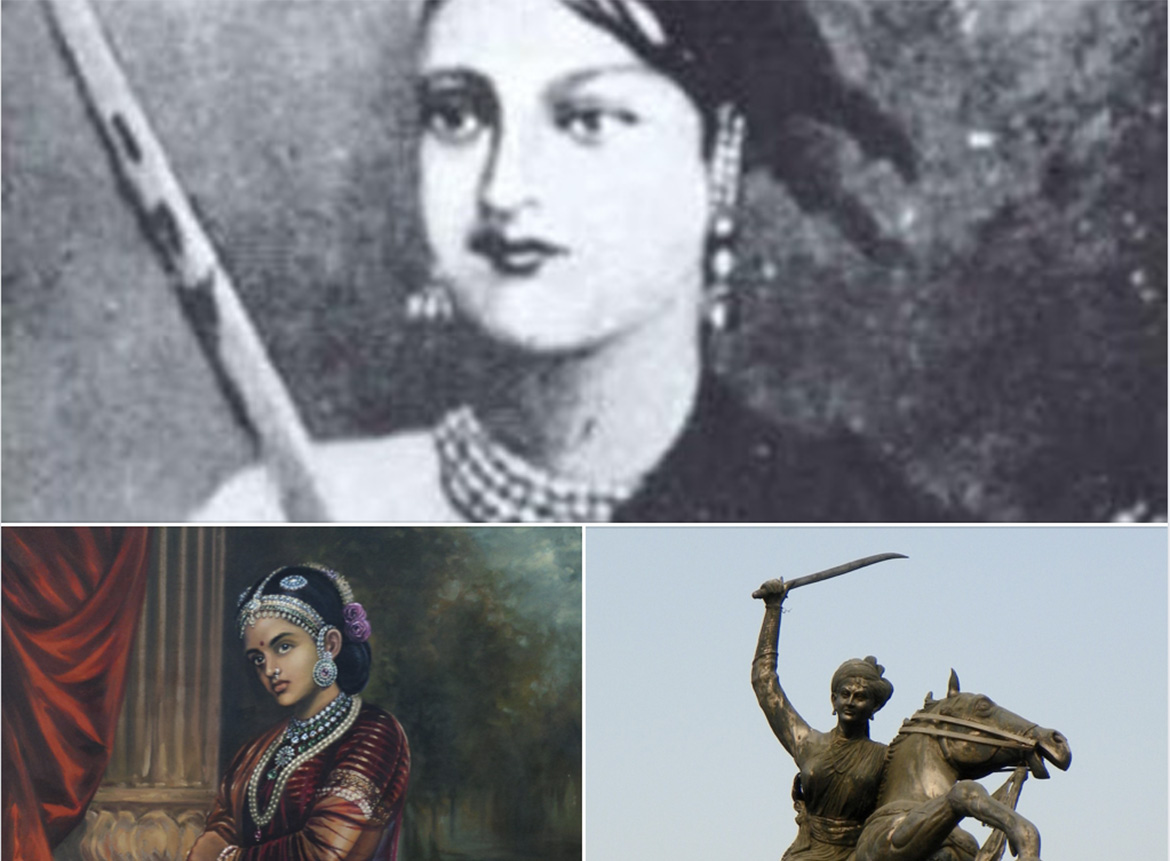

Born to a wealthy high caste family, she received an excellent education and learned to ride horses and handle weapons while playing with her brothers. She took the name of Lakshmî Bâî when she married Gangadhar Rao, the maharaja of Jhansi. When he died in 1853, their adoptive son being a minor, Lakshmî Bâî took over the regency.
However, due to governor general Dalhousie’s doctrine of pre-emption, Gangadhar Rao having no legitimate heir, the state of Jhânsi was annexed by the English East India Company. Lakshmî Bâî then had to leave the palace.
Refusing to give up her kingdom, she gathered an army of volunteers strong of 14 000 women and improved the defenses of the city which was attacked by the British on March 25, 1858. The battle of Jhansi was fierce. Both men and women fought to push back the besiegers and Lakshmî Bâî herself led her troops in defense of the city which ultimately fell after two weeks of siege.
Nonetheless, Lakshmî Bâî succeeded in escaping on horseback at night, and reached, in only 24 hours, the fortress of Kalpi where she was joined by several rebel princes. There, she persuaded them to take the offensive and to seize the fortress of Gwâlior. The success of this operation tightened the ranks of the rebels. However, the British forces did not take long to retake the fortress, and Lakshmî Bâî died on the second day of battle, on June 18, 1858.
She became a symbol of resistance against British colonization and, in recognition of her achievements, several monumental equestrian statues of her were built, in Agra, Ahmedabad, Gwâlior and Jhansi. In 1943, her name was also given, by the Indian nationalist leader Subhash Chandra Bose, to the first women's regiment, the Rani of Jhansi Regiment of the Indian National Army.
@ Adama Toulon - Julie Henry Poutrel
©Photo 2: the lost gallery CC-BY-2.0

